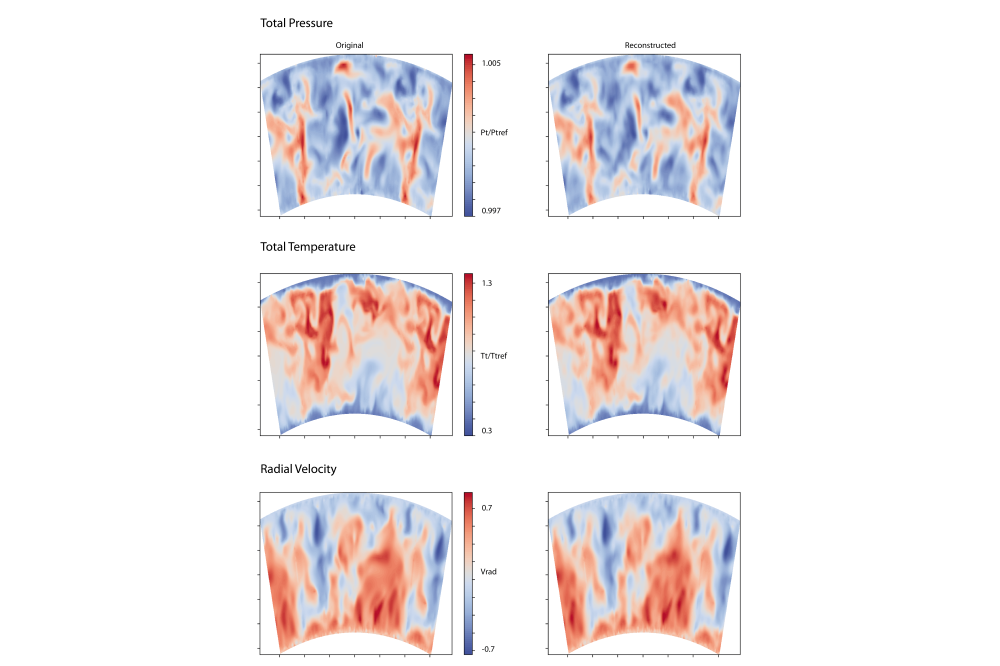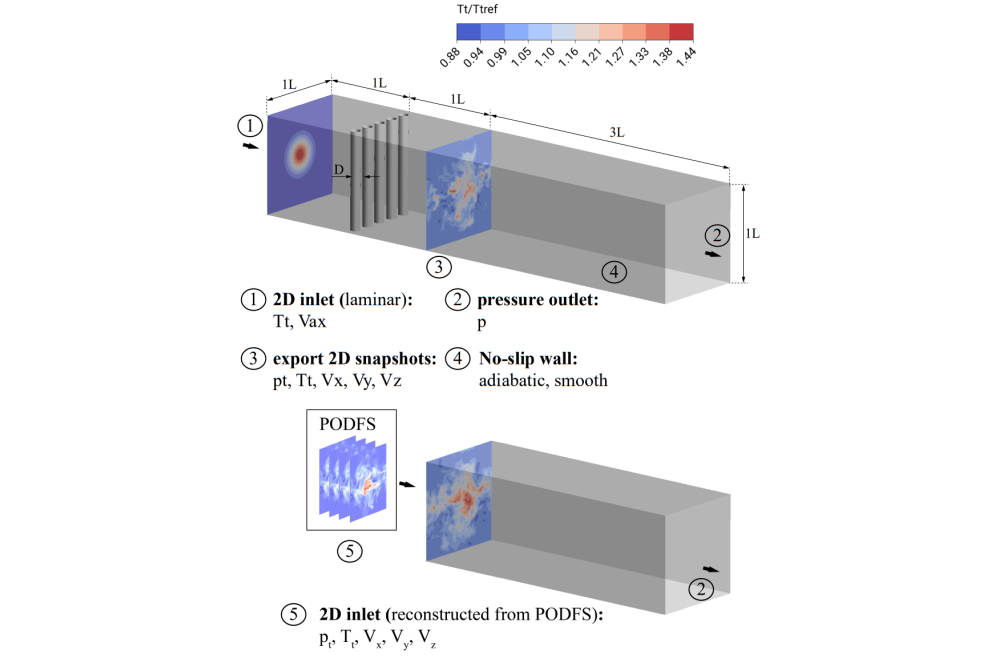Unsteady 1-Way Coupling of Combustor and High-Pressure Turbine
Introduction
The flow conditions at the combustor turbine interface (CTI) have a significant role in the development process of modern gas turbines and turbo engines. At this location, the relevant information is transferred from the combustor to the turbine, and a deep understanding of the flow there is critical for a robust turbine design. The high-pressure turbine and especially its first stage is strongly affected by the flow in the combustor upstream. To design the turbine to specific life requirements and to optimum efficiency it is of very high importance to understand the interaction mechanisms between the combustor and turbine and to take all the important combustor-related effects into account.
Methods
To enable scale-resolving simulation in the turbine context, it is essential to formulate an appropriate set of time-accurate inlet boundary conditions. A novel method for the unsteady 1-way coupling of combustor and turbine was developed. This method enables Proper Orthogonal Decomposition and Fourier Series (PODFS) to compress the full unsteady snapshot data at the CTI and uses it as inlet conditions for the turbine simulation.
Results
In the first part of this project, the capability of this method to reproduce the turbulent flow at an interface plane was shown on a generic channel test case. A baseline simulation, consisting of a turbulence-generating inlet section and a downstream following channel was used to create data for the PODFS method. A second truncated simulation used this data as inlet boundary conditions. To determine the right level of compression, the number of POD modes and Fourier coefficients used for the boundary conditions was varied. This showed a higher influence of the modes on the accuracy of the signal than of the Fourier coefficients. Changing the number of modes and Fourier coefficients alters the compression ratio of the method. The more modes/Fourier coefficients used in the method, the higher the accuracy of the “reduced order model” (ROM) data but also the lower the compression rate. The capability of the PODFS method to reproduce the full transient interface data could be demonstrated. In the second part of this project, the PODFS method was applied to combustor LES data. A compression ratio of 6 could be achieved without losing important information. Preliminary simulations of the first nozzle guide vanes of a high-pressure turbine were conducted, using the PODFS representation of the CTI data.
Discussion
The developed method for the unsteady 1-way coupling of the combustor and turbine could be validated on a simple test case and be applied to an actual combustor-turbine case. The first results are very promising and in a prolongation project, more simulations of the high-pressure turbine case can be conducted to investigate the influence of combustor unsteadiness on the turbine’s aerothermal behavior.





